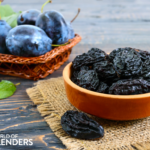This post may contain affiliate links. If you use these links to buy something we may earn a small commission. Thanks.
Orange juice is the perfect accompaniment to any breakfast. With home juicers readily available, making your own freshly squeezed orange juice instead of buying commercial juice has never been easier.
The superior and most popular orange for orange juice is the Valencia orange for its universally-appealing sweet taste, though that doesn’t mean you should write off the competition.
However, not all oranges are great for juicing.
Today I’m doing a deep dive on the 7 best oranges for juicing, the health benefits of fresh orange juice as well as provide you with a few tips to get the best out of your oranges.
Growing Seasons for the Best Oranges for Juicing
| Type of Orange | Season of the Year |
| Valencia | April to June |
| Navel | October to February |
| Blood orange | February to April |
| Clementine | Early November to January |
| Tangerine | Autumn to Spring |
| Satsuma | Early November to early January |
| Tangelo | Late winter to early spring |
The Seven Best Oranges For Juicing Are:
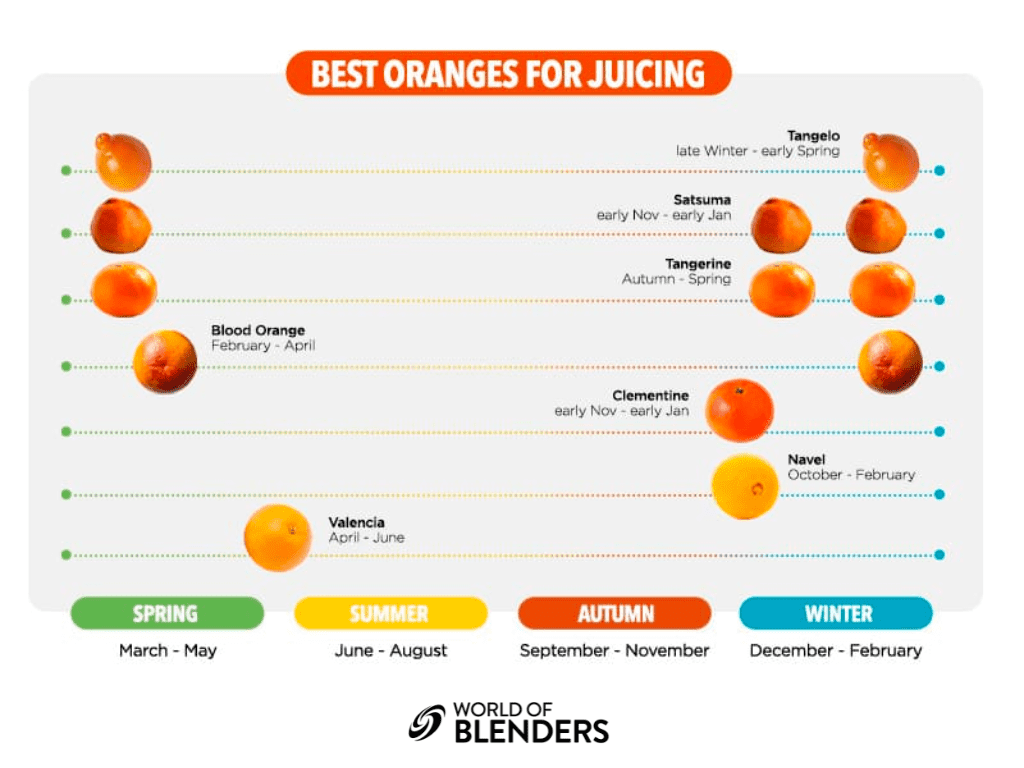
1. Valencia Oranges
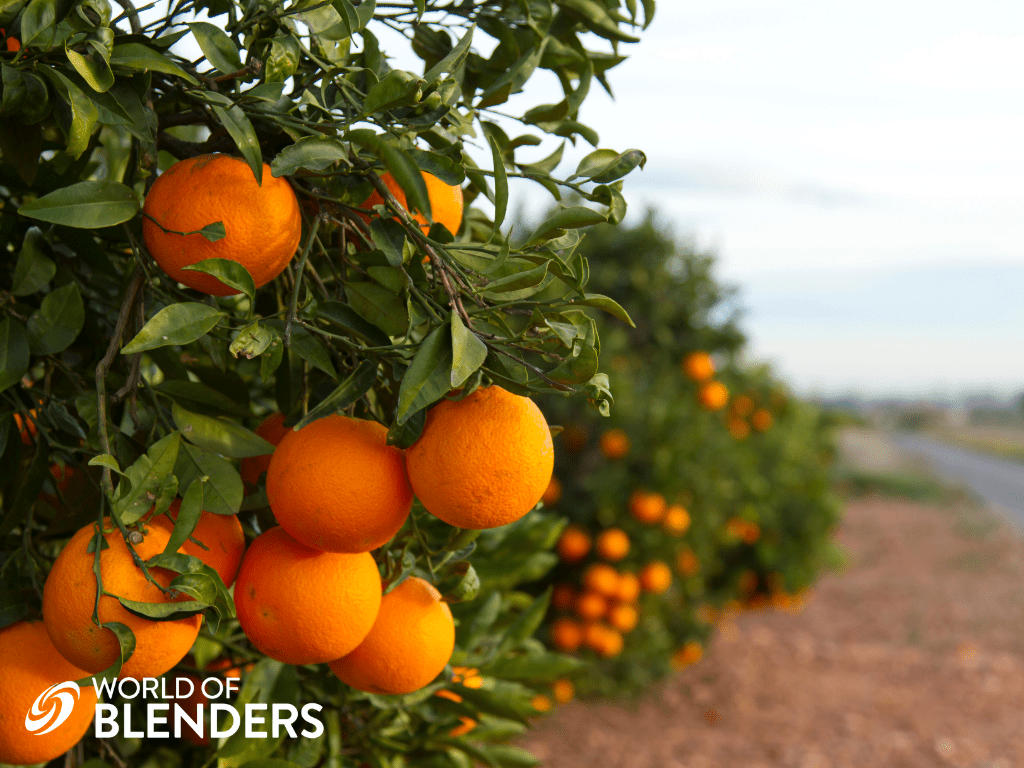
Though named for Valencia in Spain, Valencia oranges were first grown in California and are currently most commonly grown in Texas and Orange County, Florida.
Probably the most popular and commonly found juicing oranges, Valencia oranges are very sweet and produce a distinct, vibrantly-colored fresh juice, making them very popular oranges for juicing.
They also only have a few seeds, anywhere from one to six. So, counting the seeds is a good way to tell if you’re eating Valencia oranges.
These sweet and juicy oranges are primarily produced for commercial juice, and their high juice content and rich orange color make Valencia Oranges a winning choice for your breakfast table.
Peak Season
Valencia oranges are best from April to June.
2. Navel Orange
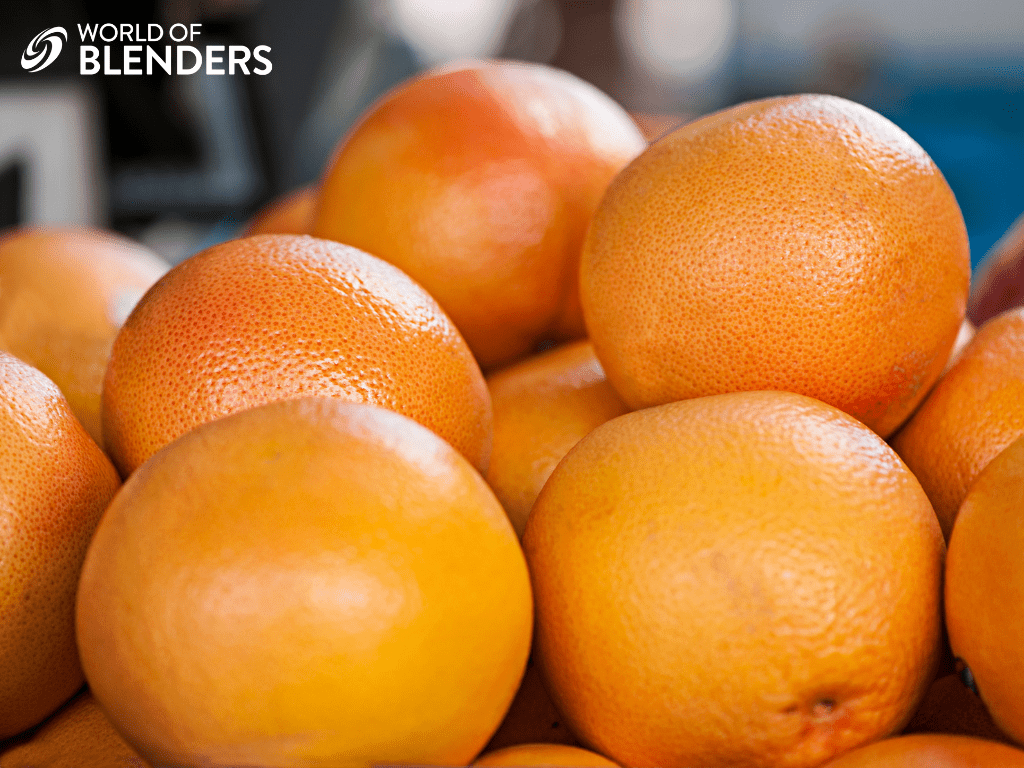
Navel oranges’ sweet flavor and seedless nature would seem to make them a strong candidate for orange juice.
The most commonly available orange, Navel oranges are cheap, easy to peel, easily accessible, and their generous size means a high juice yield.
The balance of flavor in navel oranges is more sweet than tart, although they contain a compound called limonin which will make the juice bitter if it is left too long. So, as long as you plan to drink your freshly squeezed juice straight away, Navel oranges are ideal.
Navel oranges are also seedless, so they are easily juiced and are delicious when eaten fresh – a truly versatile fruit.
Peak Season
Navel oranges are best in October through February.
3. Blood Orange
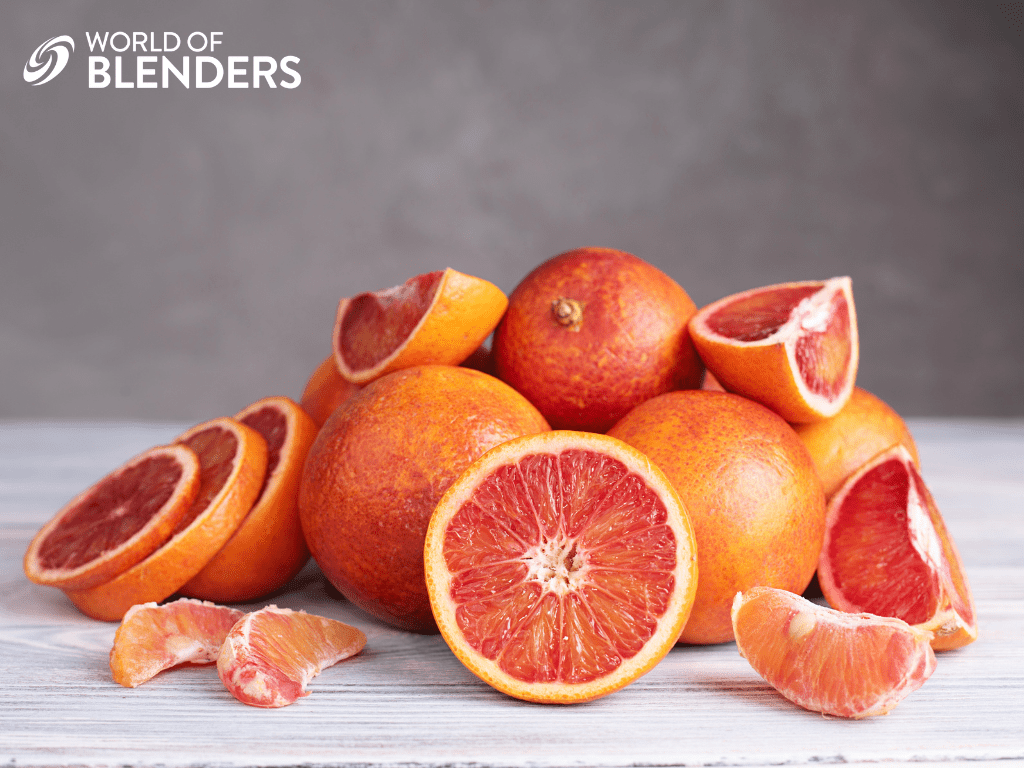
Blood oranges can be spotted by the slight red blush on their skin and the striking, dark color of their red flesh, caused by a pigment called Anthocyanin, which begins in the peel before seeping into the flesh.
Anthocyanins are a powerful antioxidant, the same one found in the skin of blueberries. Antioxidants are a strong anticarcinogen and can help protect against diabetes and inflammation. Blood oranges also contain a full daily dose of vitamin C, so you can see these are perhaps healthier than other oranges.
Blood oranges are most commonly available during December through April, making them great alternative oranges for juicing during the off-season for other oranges.
Blood oranges produce delicious juice, which is sweeter and less tangy than other oranges, with gentle floral notes. There are a few varieties, some with hints of raspberry or cranberry.
Their unique flavor profile, health benefits, and coloring make blood oranges a great fresh fruit for juices.
However, the juice ferments quickly, so be sure to only make enough freshly squeezed orange juice for a batch you plan to drink in one day.
Peak Season
Blood oranges are best from February to April.
4. Clementines
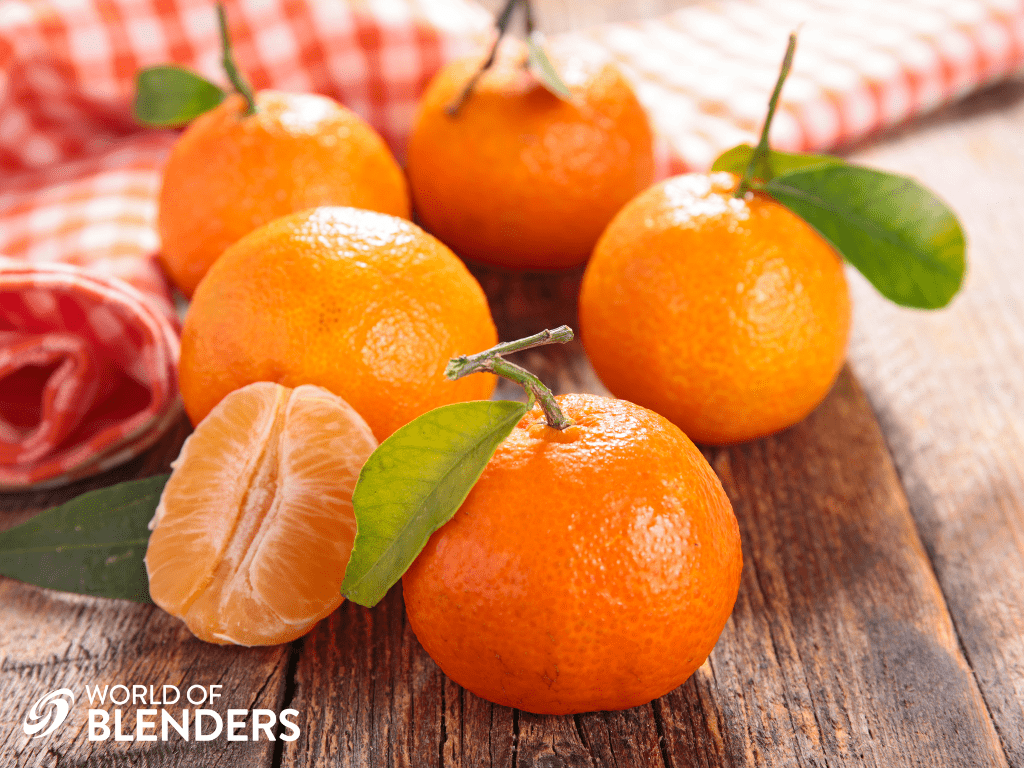
Originating in Algeria and available during the winter months, clementine oranges are popularly associated with Christmas time and are part of the mandarin family.
Easily separable segments, very few seeds, and loose skin make clementine oranges perfect for easy snacking.
However, due to their smaller size, they’re not ideal for orange juice on their own, or you will require a large batch to make it worth your while. Despite these issues, clementines are among the sweetest oranges and produce a delicious juice.
If you decide you want to try their juice, they will produce more when warm – like most oranges. A trick is to microwave them for 15-20 seconds and give them a good roll on a hard surface to make sure the orange juice is worth the squeeze.
Peak Season
Clementines are best from early November through January.
5. Tangerines
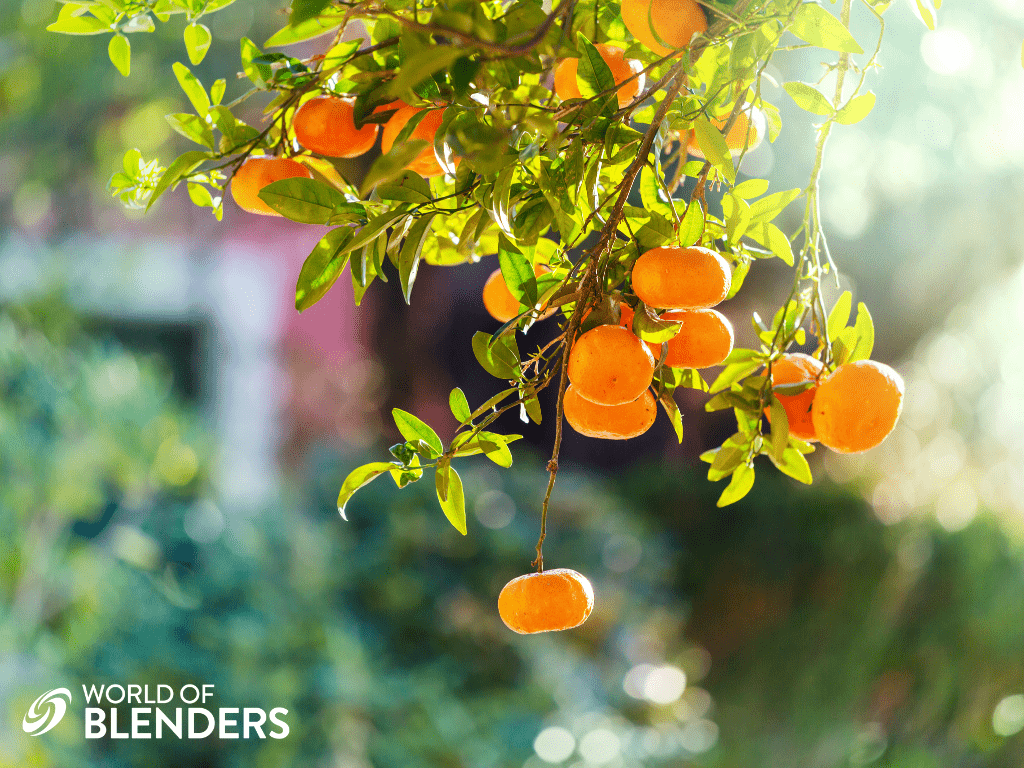
Another member of the mandarin family, this small, easy-peel orange is great for snacking. However, like clementines, they aren’t the best oranges for juicing due to their small size.
It might not be cost-effective to make orange juice out of tangerines by themselves; however, they make the perfect mixer for when you’re juicing larger oranges.
If you find the Valencia oranges you picked up for your fresh-squeezed orange juice aren’t up to scratch, try popping a few tangerines in – their lively, sweet taste will give your juice the boost it needs.
Their high water content also facilitates the absorption of the healthy dose of vitamin C that these little oranges are packed with.
Peak Season
Tangerines are best from autumn to spring.
6. Satsuma Oranges
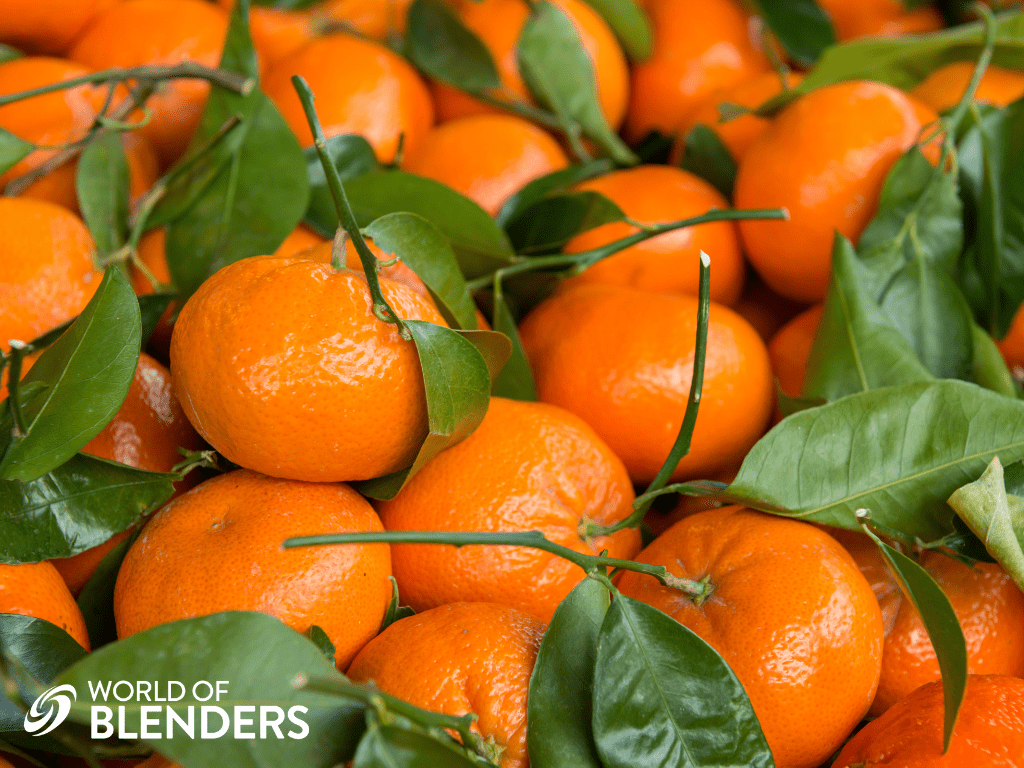
Our lists’ final member of the mandarin orange family, the satsuma is small and snack-friendly like its sister oranges. And, like the other members of the mandarin family, their small size means you will need to buy in bulk to make juicing them worth your while.
You can find these easily-available oranges in virtually every supermarket, meaning that buying a few bags is easy and cheap.
Like the rest of the mandarin family, satsumas aren’t the biggest and best oranges for juicing, but their cheapness and easy availability makes them the perfect way to add extra sweetness to your own orange juice.
Peak Season
Early November to early January.
7. Tangelo Oranges
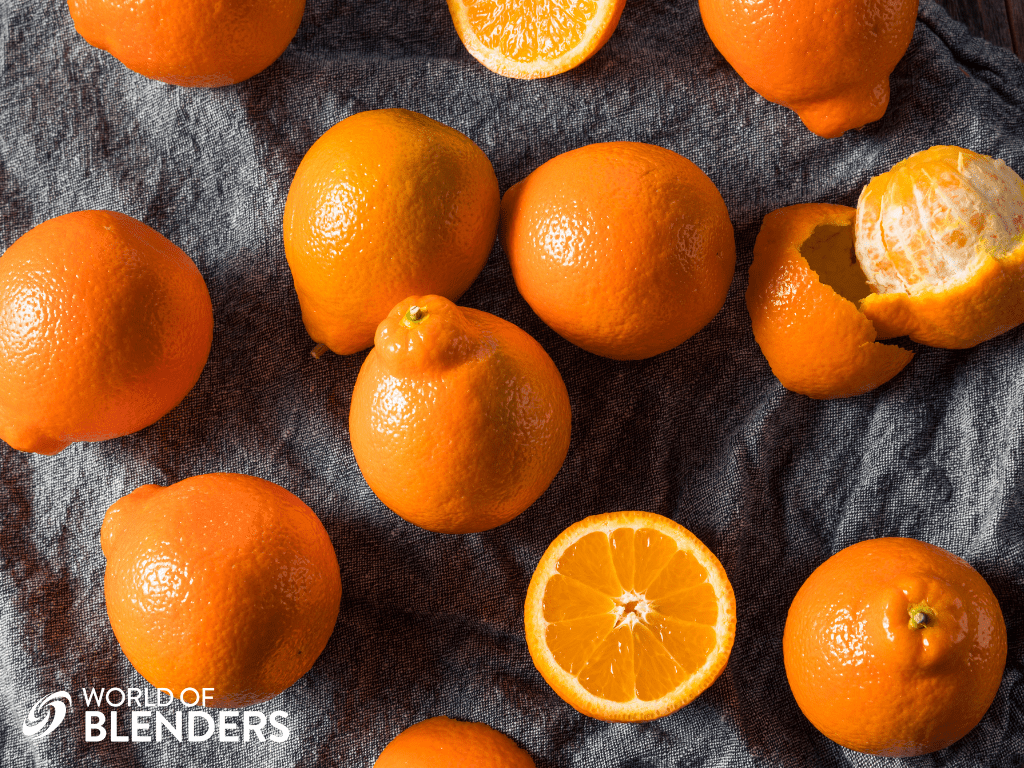
This interesting little fruit, also known as a Honeybell, is a hybrid of a tangerine and a grapefruit or pomelo.
Dark-skinned and with a little nub of skin at the top, Tangelo oranges can vary in size from a regular orange up to the size of a grapefruit.
With the added kick of those other citrus fruits, Tangelos capture the sweetness of an orange and offset it with the bitter taste of a grapefruit.
Sitting at 70 calories per fruit, the Tangelo is also a great option if you’re trying to lose weight.
The generous size and high juice yield mean that the juice of one Tangelo is enough to fill a glass, and the uniquely sweet yet tart flavor makes this an excellent choice for home juicing.
That being said, Tangelos are not readily available, so you may have to visit a more specialized greengrocer for yours.
Peak Season
Late winter to early spring.
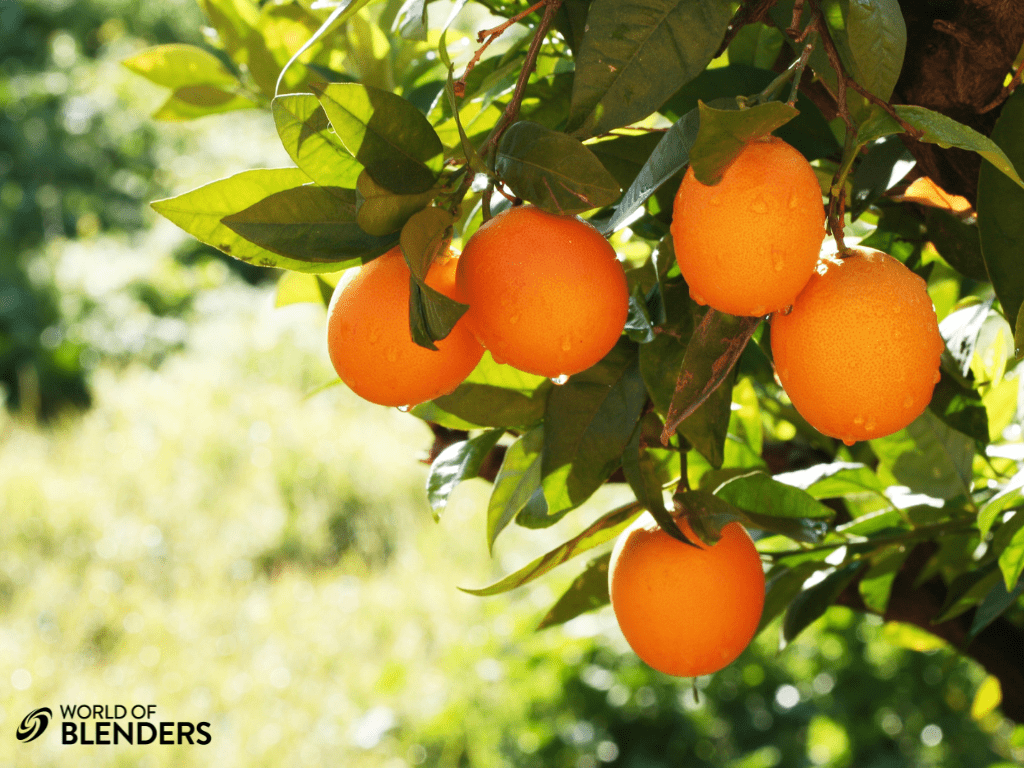
The Benefits of Freshly Squeezed Orange Juice
Oranges are a fantastic source of vitamins and a host of other beneficial compounds, and freshly squeezed orange juice is the perfect way to access them easily.
- High in Vitamix C – A glass of orange juice can provide up to 67% of your RDA of vitamin C, a water-soluble vitamin crucial to immune system function and a powerful antioxidant. It’s also valuable for gum health and bone formation.
- High in antioxidants – While some oranges, like blood oranges, contain higher antioxidant counts, all oranges boast a high antioxidant level.
- Helps with cholesterol – Fresh orange juice can also help reduce your body’s overall cholesterol level, one of the main predictors of heart disease, as well as reduce your blood pressure.
- Less preservatives – Juicing your oranges at home puts you in control of the process, ensuring nothing gets into your fresh orange juice than what you put in it. Many commercial juices contain preservatives to enhance their shelf life but cutting out the middleman means your juice will be purer.
Tips for Juicing Oranges
To get more juice from your oranges, try heating them slightly first. You can do this in the microwave – 10 seconds should be sufficient.
Another great way to increase your juice yield is by rolling the fruit on the countertop before juicing. This will break down the cell walls and allow the juice to flow out better. There are different types of juicers you can pick from as well!
Once you’ve made your freshly-squeezed orange juice, make sure to store it properly so you can enjoy it at its best. It’s best stored in the refrigerator and used within a week or two, but frozen orange juice can be stored for up to a year.
In either case, be sure to use the right sized container with a secure lid. When you come to drink your juice, give it a mix first, as the pulp will have settled to the bottom during storage.
Read more: How long does fresh juice last in the fridge?
What Can You Do With Leftover Orange Pulp?
Once you’ve made your orange juice, don’t be in a rush to discard the pulp. If you’re saving money by juicing at home, you may as well get full usage out of the oranges!
One of the downsides of juices and smoothies, in general, is that we miss out on most of the great benefits contained fiber and friendly nutrients in the fruits we press.
All the fiber from oranges is stored in the pulp that’s left after you’ve made your juice, so if it goes to waste, you’re missing out on a lot of goodness.The pulp from oranges is soluble, meaning it dissolves in water and instead becomes a sort of thick gel.
When consumed, it can reduce LDL cholesterol and improve blood sugar control for those who have diabetes.
As well as a large proportion of the fruit’s vitamin C, the majority of the orange’s flavonoids, the antioxidant and antimutagenic bodies within the fruit, are contained in the pulp.
If you’re using a masticating juicer, it will extract the fiber from your oranges as it strains them, making it easy to collect.
If you aren’t planning on eating it that day, make sure to freeze the pulp immediately.
You can also freeze them into ice cubes to add to water or smoothies later on for an added flavor boost.
Common Questions About Juicing Oranges
Fresh orange juice can last for 2-3 days in the fridge. It will maintain its best quality up to 3-4 months in the freezer, but it will keep indefinitely beyond that.
You do need to peel the oranges before juicing. The orange peel can contain oils that might lead to some nasty indigestion, not to mention that it’s not especially tasty!
However, if you’re using a manual juicer, it makes sense to keep the skin on as the reamer will only interact with the fruit’s flesh and will give you a better grip on your oranges.
The number of oranges it takes to make a glass of juice depends on the kind of orange and how big they are. A Valencia orange is bursting with juice, and around one is enough to fill a glass, the same with Navel orange. You might need around 2-3 for a blood orange and about 5-6 for a glass of mandarin juice.
Final Thoughts: Which Oranges Should You Get for Juicing?
The variety of oranges available to us means that we can take our pick of whatever orange we fancy that day.
- Blood orange – The great flavor and dappled red color of blood oranges, along with their sweet and tart flavor, make them another excellent dark horse choice.
- Valencia – The Valencia orange’s sweet flavor and bright, wholesome color make them the best oranges for juicing.
Now that you know the best types of oranges for juicing, you’re ready to juice away!
Read more: Prune juice vs Plum Juice

